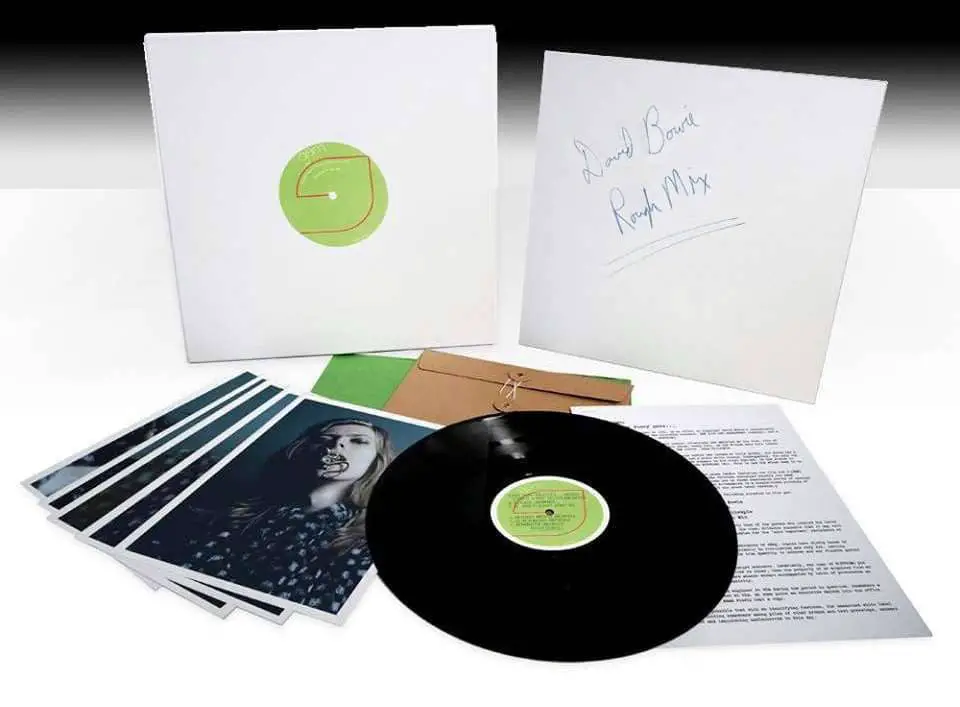The piano
Contents
It had a tremendously bright sound that unfortunately was lost when the sound board had to be replaced. Because of its inherent sound it was remarkably easy to record. Two, maybe three, microphones and just a little eq… I have heard many pianos in my time but I have never heard a better “rock” piano than that one.
The Bechstein grand was used all over Hunky Dory, and became perhaps the most distinctive sound on the album. Its bright tones were instantly recognisable, from the opening notes of ‘Changes’ and ‘Life On Mars?’ to the high flourishes on ‘Quicksand’ and ‘Song For Bob Dylan’. Mostly it was played by Rick Wakeman, although Bowie used the instrument on ‘Eight Line Poem’. The piano also featured on the Ziggy Stardust album, where it was played by Mick Ronson, and on Aladdin Sane, where Mike Garson took it to the next level.
If that wasn’t enough, the piano was used on many other classic recordings in the 1970s, including Queen’s early albums, Nilsson’s ‘Without You’, early Elton John hits including ‘Your Song’ and ‘Tiny Dancer’, and albums by Supertramp, Carly Simon, Genesis and many others.
One of the main reasons why Trident was so popular was its piano, which was an 1830 Bechstein piano. It was an amazing-sounding piano. Rock ‘n’ rollers loved it; I think classical musicians would’ve loathed it. It was the piano that was on ‘Hey Jude’, all of the early Queen stuff, Elton John’s early albums – all the ones before Honky Chateau were done on that – Carly Simon, Harry Nilsson, it was an amazing piano on so many hits. And that was the one Rick Wakeman played on ‘Life On Mars?’.
David Bowie: Ultimate Record Collection (Uncut)
BOWPROMO
By 26 July seven of Hunky Dory‘s songs had been recorded and mixed, and were included on a promotional sampler, known as BOWPROMO after the etching in the runout of the vinyl. Five hundred copies were pressed, with Bowie’s songs on one side and recordings by Gillespie on the other. Bowie’s contributions, with mixes different from those on Hunky Dory, were ‘Oh! You Pretty Things’, ‘Eight Line Poem’, ‘Kooks’, ‘It Ain’t Easy’, ‘Queen Bitch’, ‘Quicksand’, and ‘Bombers’. The flipside contained Gillespie’s version of ‘Andy Warhol’, along with five of her own songs: ‘Mother’, ‘Don’t Be Frightened’; ‘Never Knew’; ‘All Cut Up On You’; and ‘Lavender Hill’.
Later additions included the songs ‘Changes’ and ‘The Bewlay Brothers’. The final ones to be recorded, on 6 August, were ‘Life On Mars?’ and a remake of ‘Song For Bob Dylan’.
Although he was more involved in the recording than he had been with The Man Who Sold The World, Bowie delegated the album’s mixing almost wholly to Ken Scott. In the days before console automation this required deft movement of the faders and dials and, due to the complexity of Bowie’s music, Scott painstakingly split many of the songs into separately-mixed sections before editing together the final masters.
With Hunky Dory, there was only me and, for most of the time, an assistant. I heard a hundred changes in my head that needed to take place, but the only way I could do the mix without having a hundred hands to move the faders, change the EQ, and pan and adjust the reverb and delays at the appropriate time was to get one section right, then the next section, edit them together and listen to make sure that the edit worked, then on to the next section and continue from there. Not being completely dumb, I made sure to carefully make marks on the console with a china marker so that if the edit didn’t work, for whatever reason, I could always go back to the settings for the section before and start again. That way I could make all the changes and get the mix sounding exactly as I wanted, and once all the sections were finally put together I had the complete song, love it or leave it. That’s the way I worked for many years after that. The one drawback to this method of working is that if you don’t like the finished mix you literally had to start from scratch. There was no ‘Let’s just try one more take.’ Over the years I have had it pointed out to me that if you listen on headphones you can hear some of those edits, but thankfully they’re few and far between.
Abbey Road To Ziggy Stardust
Remarkably, Hunky Dory was recorded without Bowie being under contract with a record company. Tony Defries took copies of BOWPROMO to New York for ten days in August 1971, to drum up interest in Bowie and Gillespie. Five labels took notice: Bell, CBS, Columbia, RCA and United Artists. Of these, RCA was most appealing to Bowie, not least since it was the home to Elvis Presley.
United Artists was an early frontrunner, and a contract was almost signed before a last-minute offer from RCA came through. Bowie flew to New York on 8 September, and signed to the label the following day. It committed him to recording three albums over a two-year period, at a royalty of eleven per cent. An advance of $37,500 would be made available for each album. While in New York he met Lou Reed, Iggy Pop and Andy Warhol.
RCA’s head of A&R, Dennis Katz, also bought the masters for Bowie’s two previous albums from Mercury for $10,000 each. This allowed the label to reissue them in the wake of Bowie’s commercial success in 1972.

